The road to building a brand is long and tedious, full of doubts and questions of all kinds. Passion, the desire for self-fulfillment and ambition are the prerequisites and driving forces behind such an undertaking. If you’re reading this article, it’s because your desire to create your own brand is at its strongest and you’re about to take the plunge.
Congratulations! You’re well on your way to the beginning of your brand's life! Even though this major project is very attractive and the concept of this adventure appeals to you, it’s quite normal for you to have dozens of questions about the logistics of entrepreneurship and the steps you need to take first.
How do you find the idea that’ll allow you to stand out from the competition? How do you get customers in ecommerce? How do you go from idea to product? Will buyers come?
Don’t panic! While it’s true that you seem to be at the bottom of a mountain that may seem insurmountable in the short term, you’ll see that if you try to take things step by step, this mountain will quickly turn into a walk in the park, provided you carry out your brand-creation journey in the right order, with the long term in mind.
Let’s take a look at the key points that’ll make your concept a commercial success, with the assistance of various tools, the support of fundamental documents for the rest of your adventure, and the unfailing support of high-performance solutions designed for you and your new brand.
Table of contents
- Building your own brand: Creating a brand identity
- What budget should you set aside for developing your brand?
- What should you study before creating a brand?
- How do you launch a new brand? 12 steps
- Common mistakes to avoid when building a brand
- How to measure the success of your brand-building efforts
- How can you easily create your online store?
Building your own brand: Creating a brand identity
Let’s go back to basics first, to define exactly what a brand is. Basically, it’s not just a name or an image, but everything that defines an entity.
Because a brand is not a soulless object—quite the contrary!
Like a physical person, a personality, a brand represents the identity of a company, with its intellectual property, its added value, its visual identity, and its one-of-a-kind concept.
Take a look around you: every brand you know has an image that allows you to create your own appreciation and feelings around it.
Beyond a logo, a business card, a good slogan, or photos on social networks, you harbor feelings and emotions about brands, just as you do about the people with whom you come into contact.
If you want to start selling products, for instance, you’re not just going to sell your products in a linear way, you're going to build your brand around them.
Naturally, you’ve already thought about a color palette, images, a name, the style of website you want, a presentation style on social networks, etc. All these features combined create the brand, your identity as a company, to exist in a competitive market and stand out from the other brands out there.
For example, take Nike: this American company founded in 1964, which takes its name from Nike, the Greek goddess of victory, has marked generations of young and old alike.
Nike is a globally renowned athletic apparel and footwear brand, recognized for its innovative designs and famous slogan “Just Do It.“ Specializing in performance-oriented products, Nike offers a wide range of athletic shoes, apparel, and accessories catering to various sports and active lifestyles.
The brand’s logo, the simple Swoosh, has developed into one of the most recognizable brand logos worldwide.
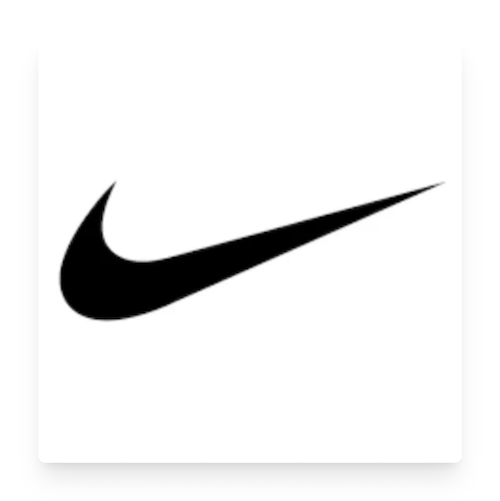
What’s more, the various advertisements that have created a buzz over the years, often making use of powerful storytelling designed to encourage and inspire, have helped create the label’s aura that endures to this day.
What budget should you set aside for developing your brand?
It’s difficult to give an exact answer to this question... It all depends on your ambitions, the type of products you want to sell, the size of the business you want, the legal status, and the type of outlet you want to use to present your brand.
All these budgets can range from a few hundred dollars for small brands looking to get off the ground quickly, to several thousand dollars for companies aiming to compete with the big names.
Let’s try to draw up a list of expenses that are likely to come up quickly in your process, for an emerging brand and a small business.
- Graphics: Your logo, images, and visual identity can cost you money if you want to outsource this work to a professional.
- Marketing: To give visibility to your company, you’ll certainly want to boost your ads with online and physical advertising.
- Production: If you want to launch an ecommerce or physical store, you’ll need to produce the products and offers that’ll enable you to sell.
- Website: If you use turnkey solutions, particularly in ecommerce, this is not the most significant expense item.
Did you know that there are other ways to create your own brand and sell products without logistics?
Another form of ecommerce, dropshipping, lets you sell your suppliers’ products without having to stock them. On your merchant website, you’ll act as the intermediary between customers and your supplier, who will take care of sending your orders to your recipients.
It’s a great way to save money on stock while creating your own brand with your own identity!
What should you study before creating a brand?
In fact, to create your own brand, you don’t need any particular diploma.
Many entrepreneurs are self-taught in order to realize their entrepreneurial dreams. What’s more, thanks to free online resources, from training courses to videos on streaming platforms, it’s possible to learn the basics of ecommerce without having to go to school or to learn today’s marketing techniques without having to go to university.
Also, when it comes to graphics and brand identity, many brands are built with the aid of professionals in the field. So, as an entrepreneur, you don’t need to have all the skills you need in every area of brand creation to succeed: you may well find potential partners along the way, with whom you can work to make your business a success.
However, for those wishing to follow a specific curriculum, there are business school courses available directly after high school, to give you first-hand experience of the realities of entrepreneurship and management.
Schools and courses
At the university level, business or technology schools can also offer professional licenses as well as master’s degrees for a successful entrepreneurial career.
Once again, if you’d like to go into launching a brand without having taken a course of study, this is very possible and can enable you to retrain professionally alongside your main job to start with, as a total retraining project, or as a student or retiree project, for example. The only skills that no school can teach you will be a passion for your field and tenacity in the face of your entrepreneurial journey.
Online training
If you’re looking to get started in ecommerce while learning the ropes, look no further than the WiziShop solution, which offers free, comprehensive ecommerce training as part of all its subscriptions!
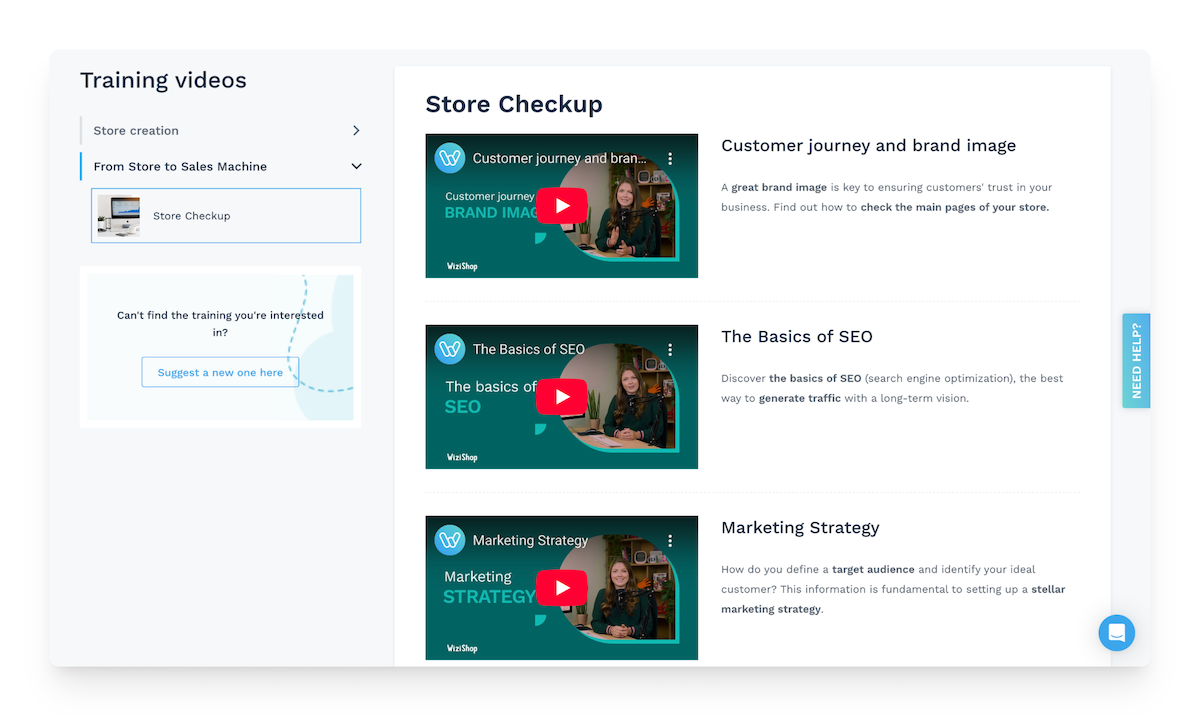
Training videos available in the WiziShop admin area
In this way, WiziShop makes ecommerce accessible to everyone, whatever the project and the product to be sold.
How do you launch a new brand? 12 steps
Building your own brand is an exciting and intensive challenge, requiring a large number of steps before your products and services are ready for the market.
By being organized and methodical, and by not rushing into your projects, you can build your own entrepreneurial path. To help you do this, follow the steps below, so that you always stay on course, your goals well aligned with your actions.
1. Perform market research
The first step in any branding project is market research. Don’t panic! This action means analyzing all the details that make up the market you want to enter. Whether it’s direct and indirect competitors, threats and weaknesses, your strengths and weaknesses, but above all your ideal buyer, always keep an eye on what’s going on in your environment.
From this precise, well-constructed analysis, you’ll be able to draw up administrative documents that will assist you in remaining on the right track throughout your adventure. Also, never forget that market research has no expiration date: keeping an eye on your business environment is always beneficial, so that you can renew, innovate, and improve your offerings.
Four key points are essential to any market study.
- Demand: the starting point for any brand creation
- Regulations: the passport to being able to start your business
- Offer: the essential analysis of the players in its market
- Products: the basic ingredients for establishing yourself in a sector
2. Find your target customer
Through market research, one of the main objectives in preparing to build your brand in advance is to be able to find your target customer and identify all their characteristics (socio-professional category, age, geographical origin, etc.).
This step is just as important as the market research itself, if not more so: without knowing the shoppers you wish to reach, your business won’t exist or survive.
Who do you want to address your offers and services to? Who is the person who has a need that you want to meet? What are the buying habits of this clientele that you need to know in order to excel in your sector?
In short, by answering all these questions, you will be able to offer products and services exactly tailored to well-defined consumers—potential customers who would be interested in your brand.
To help you, you can use online tools such as Hubspot or Canva.
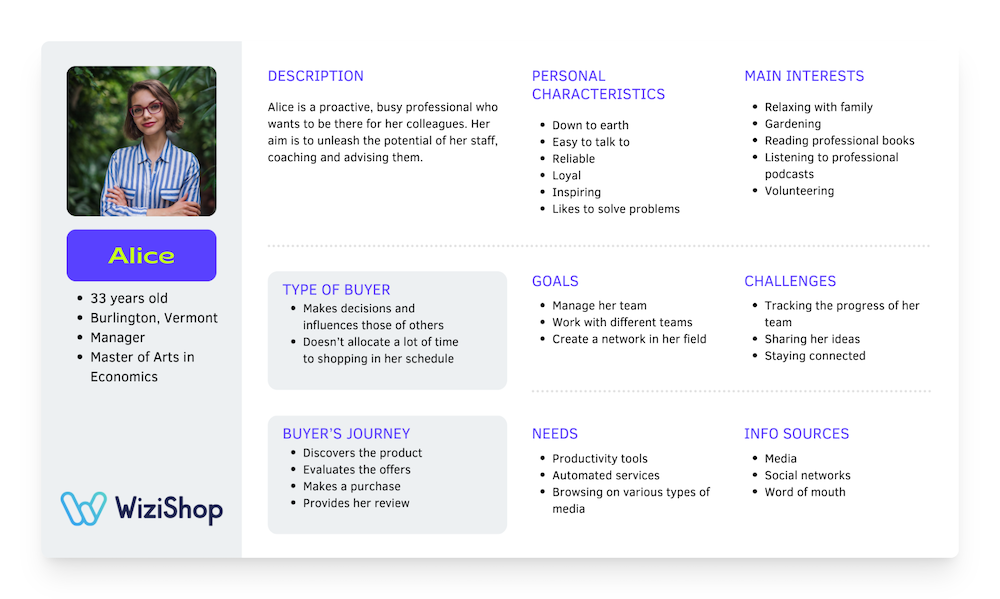
3. Create your business plan
A business plan is an essential document for all entrepreneurs starting a project from scratch. In fact, the purpose of a business plan is to list all the characteristics of the brand, including market research, and financial data. This document is the common thread running through every brand: its design should be complete, summarizing and highlighting as much information as possible about the entrepreneur’s planned sector.
Customer persona, legal structure, start-up capital, future projections, types of products and services sold, direct and indirect competition, marketing and communications plan, graphic charter, presentation of suppliers and/or product manufacturing techniques, inventory of the target market as well as the desired sector, etc.
As you can see, this basic document needs to be as complete as possible, as its purpose is to be shared with all members of the brand team, as well as with potential future sponsors or investors.
This is the official document used to present the brand project to banks and investment funds in order to raise funds. So, you need to give confidence to those who will follow you in the future through the data in this document and accurately recount all the steps that have enabled you to get this far, in order to boost the enthusiasm of your interlocutors.
4. Find or make your products
Whatever type of product you want to market with your brand, whatever type of service you want to offer with your company, it’s all a question of balance and coherence between product quality and brand positioning.
The starting point is simple: what is your DNA and who are the consumers you want to reach?
Once you’ve found the answers, you can begin your search for products to sell or materials to use in the manufacturing of your products.
For example, if you want to launch your own clothing brand, using low-priced cotton will be ideal for offering items at rock-bottom prices. On the other hand, if you want to reach a wealthy clientele, it’s better to turn to more noble, responsible, and sustainable materials, so as to be able to increase your company’s prices.
Here are some different types of products to consider for your future business:
Beyond simply worrying about prices in your catalog, these choices affect your brand’s positioning within your target market. They’ll also impact your brand presentation, communication style, and the marketing levers that can be used accordingly.
After all, you won’t communicate in the same way with a potential customer looking for cheap, trendy items as you would with a prospect interested in timeless, top-quality products. This search for the best product or the best workmanship should run parallel to the first stages of your process, as a backdrop to the best practices to be put in place right from the start of your adventure.
Be careful during this step: it’ll be very difficult to radically change the type of product or service once your first offers are in place. Just think: if your brand focuses on high-end products, how can you remain consistent by transforming your catalog and listing only low-cost products?
Conversely, how credible would it be to launch a luxury line once you’ve established yourself in the affordable market? To help you gain customers online, take the time to make the right decisions from the outset and follow your core values, your history and your intuition, without doubting your choices!
5. Select a name that suits your brand identity
As in the previous step for brand building, find a name that resonates with your brand’s DNA, positioning, and offerings.
Your brand name will influence the image you give to your products and services.
Depending on the market you wish to enter, the name of your company may guide consumers towards your catalog, or on the contrary, give an image that doesn’t correspond to the chosen environment.
The best thing to do is to think about your brand name right from the start of your venture, at the market research stage, to find out the names of competing companies. In addition, when choosing a brand name, think about the consumers you wish to turn into customers: do they speak English? Or do you have ambitions to expand internationally in the near future?
To check that your brand name is available, you can go to your specific country’s registry. For instance, if you wish to start a business in the US, you can use the Trademark Search tool on the site for the United States Patent and Trademark Office (USPTO) to do your research and make sure your chosen name is free for the taking.

If your name isn’t available, don’t force yourself to add more words or lengthen your name. It’s better to choose another term or name and check whether it's also available.
For example, you can’t call your fast-food establishment MCDO or MDonalds, even if the spelling is different from the burger giant...
It’s up to you to find the most precise name for your brand. Maybe your brand will be your own name? It’s completely your choice!
6. Write your positioning statement and mission statement
A positioning statement is a clear, concise declaration of what makes your brand unique and how you want to be perceived in the market. It defines who you serve, what you offer, and why you're different—setting the foundation for all your branding efforts.
A well-crafted positioning statement helps guide your messaging, marketing, and business decisions. It ensures consistency across your brand and makes it easier to connect with the right consumers.
- Identify your target audience: Who are you serving?
- Define your category: What industry or niche are you in?
- Highlight your specific value: What makes you stand out?
- Clarify the benefit: Why should people care?
Once you have your positioning statement, use it to craft a mission statement by expanding on your purpose, values, and long-term vision.
A mission statement is a short, powerful statement that defines why your brand exists, what it stands for, and how it serves your audience. It’s the heart of your brand’s purpose and is going to guide everything from marketing to company culture.
It helps create a strong brand identity, inspires employees, and builds trust with customers by showing your brand’s values and what you hope to achieve.
- Keep it clear and concise: Aim for one to two impactful sentences.
- Focus on your purpose: What problem do you solve?
- Make it inspiring: It should resonate emotionally with your audience.
7. Develop your brand voice
Brand voice refers to the unique and consistent tone, personality, and style of communication that a brand uses across all its messaging, including marketing materials, social media, customer interactions, and other communication channels. It encompasses the words, language, and overall communication style that help shape the brand’s identity and how it’s perceived by its audience.
The impact of brand voice on the success of your brand is significant. A well-defined and consistent brand voice can do the following:
- Build consistency: A consistent brand voice creates a unified and recognizable identity, fostering trust and loyalty among consumers.
- Enhance brand personality: The way your brand communicates contributes to its perceived personality. A distinctive and authentic brand voice helps establish a connection with the audience and can set your brand apart in a competitive market.
- Engage your target audience: An effective brand voice resonates with your audience, making your brand more relatable and appealing to its customer base.
- Differentiate from competitors: A one-of-a-kind brand voice helps distinguish your brand from the competition, making it more memorable and identifiable.
- Support brand values: Your brand voice should align with your brand’s values and mission, reinforcing its commitment to certain principles and ideals.
When developing your brand voice as you work on building your own brand, keep in mind that understanding your target audience is essential. Get a feel for their preferences and the tone that resonates with them, tailoring your brand voice to connect effectively with these consumers.
It’s also crucial that you clearly define the personality traits you want your brand to exhibit. Whether it’s friendly, professional, humorous, or authoritative, ensure that your brand voice consistently reflects these traits.
For instance, the language-learning app Duolingo is known for its tongue-in-cheek humor, often poking fun of its mascot, Duo the owl, and the reminders users receive to complete their language lessons!
@duolingo We’ve been waiting for you. Please open your Duolingo app today! #RIPDuo #RIPEveryone \u266c original sound - Duolingo
Source: Duolingo on TikTok
In addition, your brand voice must remain authentic, as authenticity is key to building trust with your potential customers. Your brand voice should therefore align with your brand’s value and be genuine in its communication, regardless of the type of content or channel you’re utilizing.
Finally, although it’s important to maintain consistency in your communication, be mindful of adapting your brand voice to suit the nuances of different communication channels. For instance, the way you communicate on social media platforms might differ from how you communicate through formal documentation.
By carefully crafting and consistently applying a brand voice that resonates with your target audience, you can establish a strong and memorable brand identity, contributing to the overall success of your brand.
8. Brainstorm ideas for a catchy slogan
A slogan is a concise and memorable phrase that encapsulates the essence of a brand, serving as a powerful tool for brand identity and marketing.
Crafting a creative slogan is crucial for brand establishment as it provides a succinct and memorable message that communicates the brand’s values, mission, or unique selling proposition (USP). A well-crafted slogan can enhance brand recognition, foster consumer loyalty, and differentiate a brand in a crowded market.
Many iconic brands have created memorable slogans that have become ingrained in popular culture. Here are some examples:
- “Just Do It” (Nike): This simple and powerful slogan encourages individuals to take action, embodying the brand’s spirit of determination and athleticism.
- “Think Different” (Apple): Apple’s slogan emphasizes innovation and individuality, capturing the brand’s commitment to pushing boundaries and challenging the status quo.
- ”Open Happiness” (Coca-Cola): Coca-Cola’s timeless slogan focuses on the emotional experience of enjoying their product, associating the brand with positive and joyful moments.
- ”I'm Lovin’ It” (McDonald’s): This catchy and upbeat slogan reflects the idea that McDonald’s food is not just satisfying but also enjoyable, creating a positive emotional connection with customers.
- ”Impossible is Nothing” (Adidas): Adidas’s slogan inspires a can-do attitude and emphasizes the brand’s dedication to helping athletes overcome challenges and achieve their goals.
- ”The Ultimate Driving Machine” (BMW): BMW’s slogan positions its vehicles as the pinnacle of driving pleasure, highlighting precision engineering and a superior driving experience.
- ”The Happiest Place on Earth” (Disney): Disney’s slogan captures the essence of its theme parks, emphasizing the joy and enchantment associated with the Disney experience.
- ”When It Absolutely, Positively Has to Be There Overnight” (FedEx): FedEx’s slogan conveys reliability and a commitment to meeting urgent delivery needs, establishing trust with customers.
- ”The Quicker Picker Upper” (Bounty): Bounty’s catchy and descriptive slogan emphasizes the brand’s effectiveness in quickly absorbing spills and messes.
- ”There are some things money can’t buy. For everything else, there’s MasterCard.” (MasterCard): This slogan highlights the convenience and versatility of using MasterCard for various transactions, both practical and sentimental.
These slogans have become synonymous with the brands they represent, demonstrating the impact a well-crafted slogan can have on brand recognition and consumer perception.
To create an effective slogan, focus on simplicity, clarity, and relevance to your brand’s core identity, staying consistent with your other branding actions. Use memorable language, consider the target audience, and aim for a phrase that resonates emotionally, leaving a lasting impression on consumers.
9. Choose your colors and fonts
The graphic charter of a brand is very important when launching a business, and nothing should be left to chance.
Just like the logo, slogan, and brand name, your color palette and fonts are branding features you’ll need to choose precisely to create the entire universe of your brand.
Once chosen, you won’t be able to change them easily, because colors and fonts will become inherent visual elements of your identity.
To maintain a strong coherence around your brand image, the color palette and fonts defined shouldn’t be too numerous: the more information is added, the more the brand identity will be diluted towards a muddled appearance. What’s more, too many fonts and too many colors will lose the user, especially on your ecommerce website.
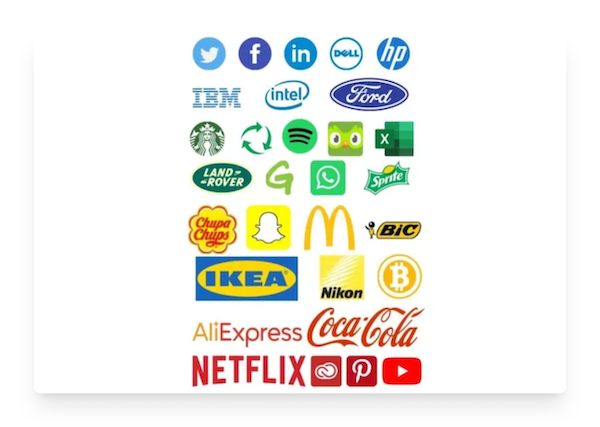
To start with, consider two or three colors and two or three specific fonts, in different shades and shapes, to maintain consistency on all your pages, particularly for your online store.
For example, if you choose a visual identity based on a pastel color palette, you might choose three colors such as lavender, mint green, and cream, which you can either intensify or fade to vary the modules on your website. The same goes for fonts: if you choose Times-New-Roman and Didot, for instance, you can use them in italics, bold, or all-caps, to offer variations without losing coherence on your pages.
10. Design a logo for your unique brand
Your logo is the emblem of your brand and a key visual element of a good branding strategy. Being able to craft the most unique image possible will offer you several advantages: telling your brand’s story to the public, representing your company visually, sharing your business values, and being able to set your company apart, particularly on the web.
When you go to design your brand logo, don’t hesitate to check availability before granting yourself ownership of the shape of your logo. Just like your brand name, your logo design must be your exclusive creation.
For this step of the brand-building process, you can take inspiration from other online logos on the internet. Then make sure you modify the style to suit the shapes you like.
Note that there are numerous platforms to help entrepreneurs like yourself design high-quality logos. If you choose software like Canva to create your company logo, make sure that you modify the details and colors of the templates offered by the platform so that it becomes your brand identity.
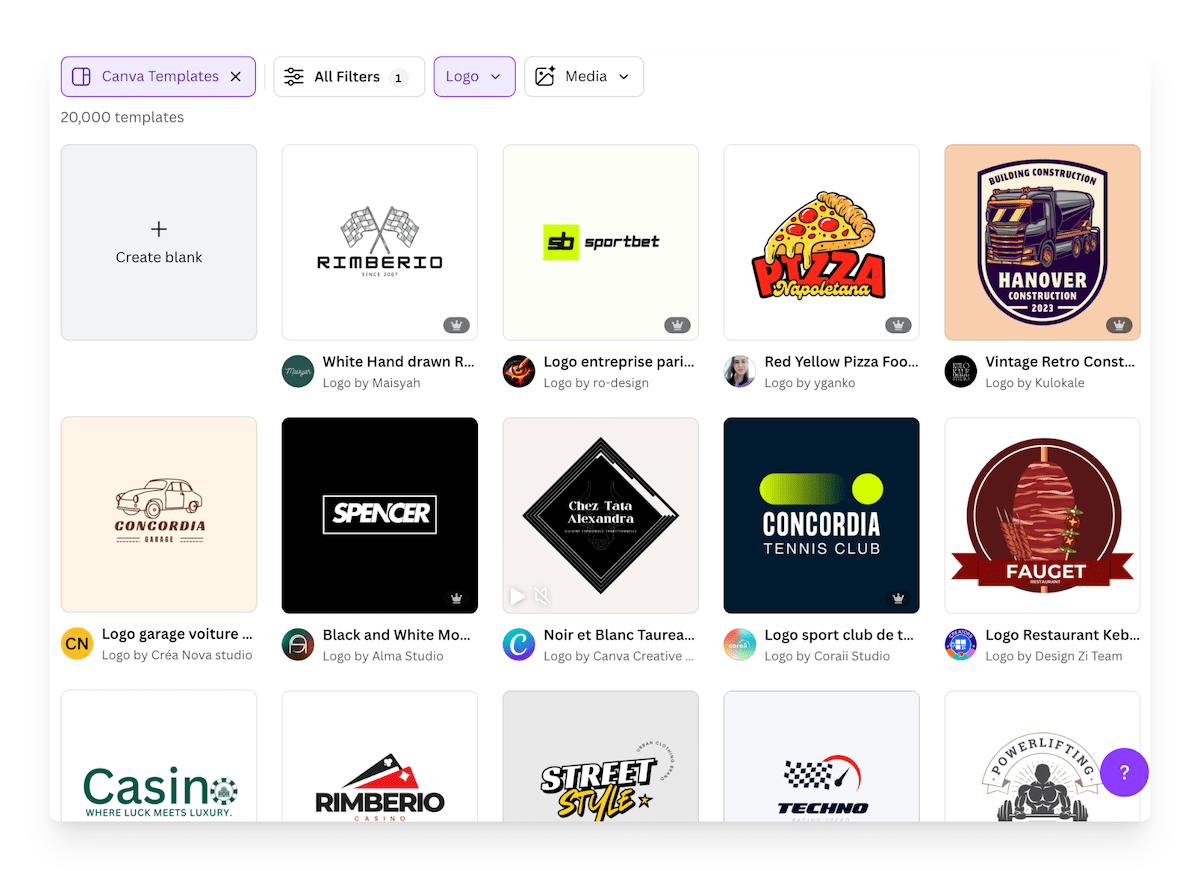
Examples of logo templates on Canva
To be sure to create a logo design that’s 100% original, reflecting your company and your products, you can also opt to contact a professional graphic designer or a communications agency to assist you with this project.
11. Get started on the internet with an ecommerce website
Now you’re ready to start marketing your product. And to get started, why not launch your ecommerce website in just a few minutes?
By choosing an SaaS, turnkey solution like WiziShop, you can benefit from all the interface and modules essential to the success of your ecommerce business, with no maintenance issues and at rock-bottom prices: the opposite of this model is called open source, and this type of technique can quickly cost you $10,000 to get your business off the ground.
A large number of entrepreneurs are setting up their own brands and turning to cloud computing and SaaS solutions to launch themselves effectively into the online shopping market. And if you want to turn to the best ecommerce solution on the market, stay with this article—we’ll explain everything at the end!
When building your brand, it’s crucial to keep in mind that one of the top ecommerce tips for success is to create a user-friendly, aesthetically pleasing website. You should therefore aim to include the following types of content in your site’s design:
- Homepage: Crafting a positive first impression is vital. For this reason, the homepage should promptly convey information about your company and its products or services so that your site visitors instantly know what your business is all about.
- “About Us” page: Feel free to be as creative and personal as you’d like with this content (while always remaining professional of course). Talk about your brand’s mission, story, target audience, and positioning statement. Consider telling people a bit about yourself and/or your team here to build an emotional connection with customers.
- Product pages: For each product page, you’ll need to clearly state the item’s key features, price, and unique selling points. Note the different variations available, such as in color, size, etc. Remember that shoppers can’t see or touch the item on your site like they could when visiting a brick-and-mortar store, so you’ll want to offer as much helpful information as possible to guide them in their purchasing decisions.
- Landing pages: The creation of landing pages aid businesses in converting users to take specific actions, such as signing up for a free trial, subscribing to a newsletter, or making a purchase. You might not have very many of these when you first launch your brand but will likely create more of this kind of content as you develop your ecommerce content marketing and your business grows.
- Testimonials: Establish social proof by showcasing positive reviews from past and current customers. This strategy enhances customer trust, motivating them to make purchases from your business.
12. Work on the development of your marketing strategy
Without realizing it, you’ve already started to build your communications strategy around your brand. Whether it’s through your logo, your brand image, or all the visual elements surrounding your identity, your communications strategy is already underway.
For this to have a lasting impact, you’ll need to write the story of your products and services, as well as that of your brand.
Who are you? What target audience do you address? What are your values? All these elements must be at the heart of all your marketing actions.
The aim of a good communications strategy is to deliver the right message at the right time to the right person.
There are many different ways to achieve this: SEO, social media, traditional advertising, blog posts, partnerships, affiliate marketing, influencer marketing, email marketing, SMS marketing... All these levers have different objectives, but they all serve the same purpose: to boost brand awareness and give visibility to your products in order to attract as many potential customers as possible.
It’s up to you to write your story!
Common mistakes to avoid when building a brand
Building a brand is a crucial process that requires strategy, consistency, and adaptability. While all entrepreneurs are bound to face setbacks and challenges when launching a venture, here are a few of the most common mistakes that you’ll want to avoid to set yourself up as best as possible for success.
Lack of clear brand identity
Not defining your brand’s mission, vision, and values is a major mistake because it leads to confusion and inconsistency. A clear mission guides decisions, a vision provides direction, and values establish trust with customers.
Without these, your brand lacks purpose, making it harder to connect with your audience or stand out from the competition. Strong branding demands a cohesive identity, ensuring that people understand what your brand stands for and why it matters.
Inconsistency across platforms
Imagine checking out a new brand’s website and seeing a completely different logo when you visit one of their social networks. You might start to doubt their professionalism and hesitate to make a purchase.
If your logo, colors, tone, messaging, or other types of visual content and elements vary across your website, social media, and marketing materials, customers may feel confused or disconnected. Maintaining cohesiveness is going to make your brand more easily recognizable and memorable.
Consistency builds credibility and reinforces your brand’s message, ensuring customers have a seamless experience no matter where they interact with your brand. An inconsistent presence can possibly lead to an unprofessional and unreliable brand image.
Ignoring your target audience
Trying to appeal to everyone instead of focusing on your ideal customer dilutes your brand’s message and makes it less impactful. If you’re lacking a clear target audience, you’ll struggle to connect deeply with anyone.
Focusing on your ideal customer allows you to tailor messaging, products, and experiences that truly resonate. This will build stronger relationships, enhance customer loyalty, and differentiate your company in a crowded market. A niche focus leads to greater success!
Failing to differentiate from competitors
Failing to highlight what makes your brand unique results in blending in with competitors and struggling to attract attention. Customers need a compelling reason to choose your company over others.
Without a clear USP, your messaging becomes generic and forgettable. Defining and showcasing your distinct value—whether through innovation, superior quality, or exceptional service—helps you stand out, build loyalty, and create a lasting impression in the minds of your target audience.
Neglecting brand experience
Focusing only on logos and visuals while ignoring customer experience is a critical mistake because branding goes beyond aesthetics. A strong brand is built on trust, emotions, and interactions.
If customers have a poor experience—whether through bad service, difficult navigation, or unmet expectations—they will disengage, no matter how great your logo looks. A seamless, positive customer experience reinforces your brand’s values, builds loyalty, and encourages word-of-mouth marketing, ultimately leading to long-term success.
How to measure the success of your brand-building efforts
After putting in the work to build your brand, how do you know if your efforts are paying off? Here are three key ways to assess your brand’s impact:
Brand awareness metrics
One of the first indicators of successful brand-building is how well people recognize and remember your brand. You can measure this through the following:
- Surveys and brand recall tests: Ask customers if they recognize or recall your brand compared to competitors.
- Website traffic and search volume: Analyze direct traffic to your website and branded search queries on search engines.
- Mentions and reach on social networks: Track how often your brand is mentioned and how far those mentions spread.
Brand engagement and sentiment analysis
Beyond awareness, engagement shows how people interact with and feel about your brand. These are a few key indicators:
- Social media engagement: Check for likes, shares, comments, and overall follower growth.
- Customer reviews and sentiment analysis: Monitor feedback and use sentiment analysis tools to gauge public perception.
- Email and content engagement: Review open rates, click-through rates, and time spent on branded content.
Customer loyalty and brand equity
A strong brand builds trust and long-term loyalty. You can measure this in several ways:
- Net Promoter Score (NPS): Ask customers how likely they are to recommend your brand.
- Customer retention and repeat purchase rate: Examine how often customers return.
- Brand equity surveys: Measure perceived value and emotional connection to your brand.
Each of these methods gives a different angle on your brand’s performance, helping you refine your strategy and strengthen your presence in the market.
How can you easily create your online store?
With the WiziShop ecommerce solution, creating your brand and marketing your products is super simple! In fact, the all-in-one solution has made all the most complex marketing levers its priority, simplifying them as much as possible and offering you the best features on the market.
With WiziShop, ecommerce is all about SEO power! In fact, more than 50 SEO optimizations are included in all subscriptions, enabling merchants to easily climb to the top results of search engines like Google.
In addition to this performance, a complete ecommerce training course is included with every subscription.
For any problems or questions you may have concerning your ecommerce business, our team of expert ecommerce Business Coaches is at your disposal, and they’ll respond promptly to take charge of your ecommerce adventure from A to Z.
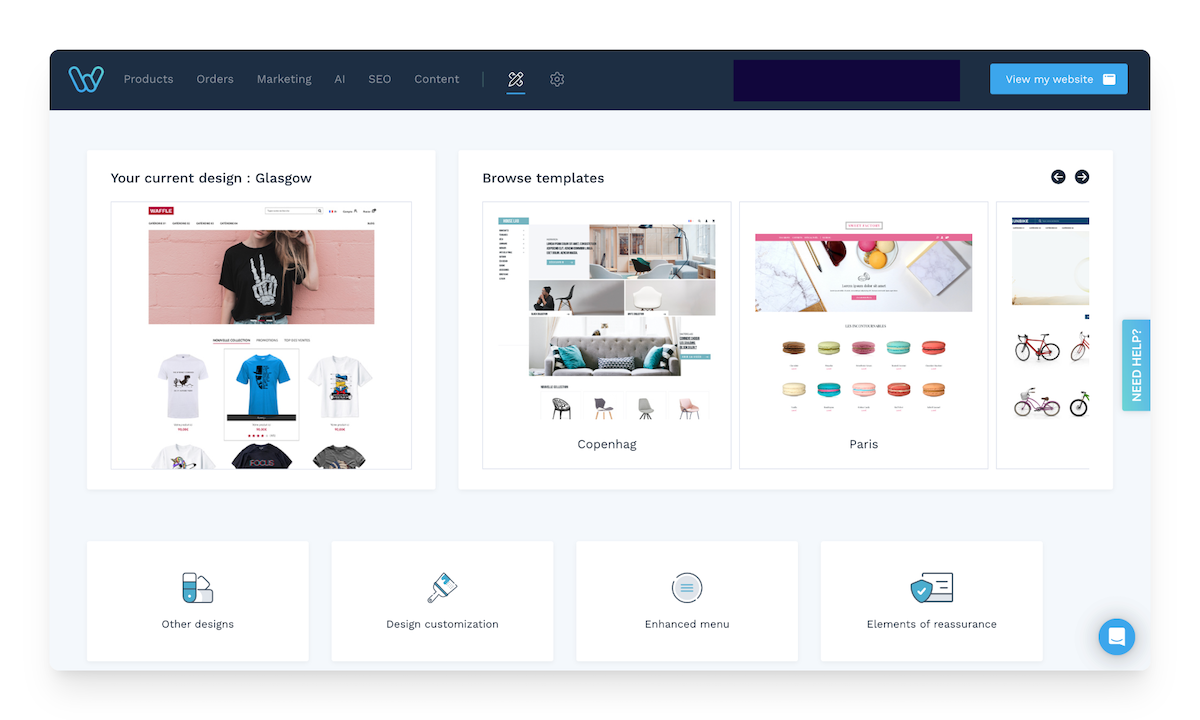
More than 400 ecommerce functions are included in all subscriptions, and to take its commitment to making ecommerce accessible to all even further, WiziShop integrates its own artificial intelligence for automatic text generation into its users’ administration areas.
Merchants can automatically generate texts that are already optimized for SEO. Whether for product descriptions, blog posts, or other kinds of text content, in English or in other languages, WiziShop’s automatic text generator can be integrated into the customer interface to further optimize ecommerce operations.
Clothing, beauty, automotive supplies, DIY home repair... Test WiziShop’s ecommerce solution free of charge for a 7-day trial period, discover the platform’s revolutionary AI, and build your brand with the support of an ecommerce solution that will always be at your side throughout the life of your business!
Try WiziShop free for 7 days
THE EASIEST NO-CODE ECOMMERCE SOLUTION✅ No credit card required
✅ Access to all features
✅ No commitment


![How to build a brand: Complete guide to getting started! [2025 Edition]](https://wizishop.com/media/67c07396c142d40a07519578/v1/how-to-build-a-brand-wizishop.jpg)







